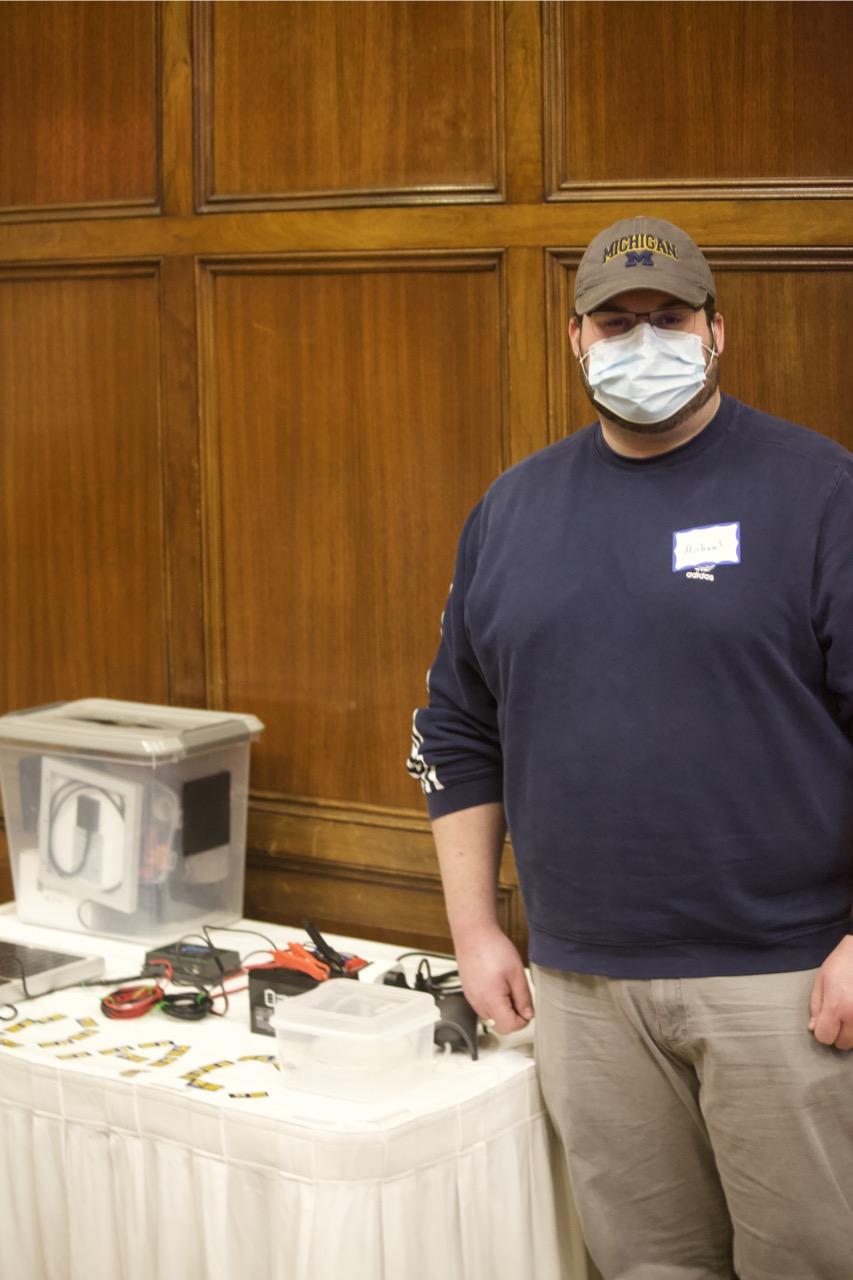
UM alum, Michael Ficaj, presents a Direct Air Capture (DAC) device that was created in a collaborative effort with fellow student Daniel Pert. This device will be featured at the 'Carbon Capture and Conversion' exhibit on display at Matthaei Botanical Gardens.
Beginning March 2 and running through April 14, 2024, Matthaei Botanical Garden will showcase "Carbon Capture and Conversion", a new interactive exhibit focusing on carbon capture technology and its role in addressing climate change. Developed through a collaboration between the Global CO2 Initiative and MBGNA, the exhibit is driven by student contributions and tailored for public education.
Dr. Kristi Kattapong from the Global CO2 Initiative, describes the motivation behind the exhibit: "Our collaboration began through the U-M Ginsberg Center's matchmaking team. I wanted our center to engage more with community partners, and the Ginsberg team introduced me to Dr. Tony Kolenic, MBGNA's Director. We saw an opportunity to not just inform, but to involve the community in understanding real-time research on carbon capture, as there's a lot of confusion about it in the public sphere."
The exhibit offers a hands-on look at carbon reduction devices and practices, categorized into natural processes like biochar, derived from biomass, and engineered solutions such as Direct Air Capture (DAC) and Point-Source Capture. "Visitors will see how these technologies work towards reducing atmospheric CO2," says Kattapong. "We have a student team that's been working with biochar, so including it was a natural choice, along with a functioning DAC device which draws CO2 out of the atmosphere, addressing the excess legacy CO2 levels we're currently battling."
Addressing the tertiary stage of carbon handling, Kattapong elaborates, "Then comes the question: What do we do with the captured CO2? The exhibit's interactive elements, including a carbon capture video game, encourage visitors to make decisions about utilization methods, which vary in their environmental and economic impacts."
One of the key takeaways from the exhibit is the prospective view of carbon dioxide as a resource. Kattapong stresses the transformative approach: "If we can shift our perception of excess CO2 as a resource rather than waste, we open up avenues for generating revenue through the sale of materials usually derived from fossil fuels – products like fuel, sanitizer, plastic, and even cement become opportunities for a sustainable economy. At some point, we may be able to derive all of the carbon we need from CO2 captured in the atmosphere. We call this a circular carbon economy."
Kattapong addresses the pressing matter of scaling carbon capture for a positive impact on climate change. "It's crucial we select scalable options that offer both environmental benefit and economic feasibility. Some processes may be expensive yet environmentally beneficial, while others might be lucrative without substantial environmental impact. Our goal with this exhibit is to present these nuances and facilitate informed conversations around them."
The "Carbon Capture and Conversion" exhibit at Matthaei Botanical Gardens opens on March 2, 2024, bridging the gap between scientific research and public understanding. Through this immersive educational experience, MBGNA and its partners demonstrate the importance of community involvement in sustainable practices and the potential for carbon capture to contribute meaningfully to climate resilience.
For additional details about visiting the exhibit, please visit myumi.ch/6ydQV.




